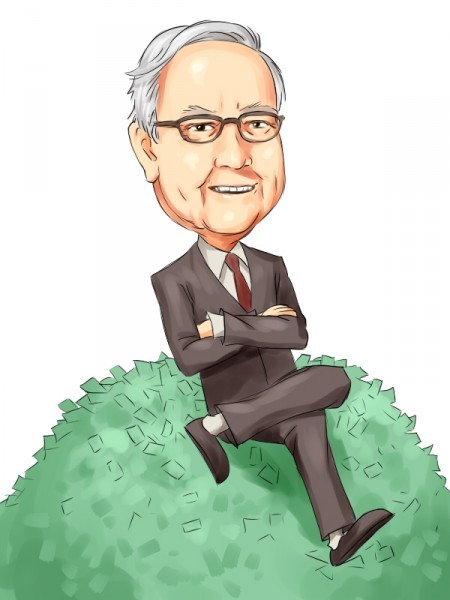Chasing Warren Buffett s Alpha
Post on: 20 Апрель, 2015 No Comment

From November 1976 to the end of 2011, Warren Buffett delivered an average annual return of 19% in excess of the Treasury bill rate, as measured by shares of his publicly traded conglomerate, Berkshire Hathaway (BRK.A , BRK.B ), versus a 6.1% average excess return for the stock market. In addition, Berkshires Sharpe ratio — a measure of return per unit of risk — is higher than all U.S. stocks that have been traded for more than 30 years from 1926 to 2011, as well as all U.S. mutual funds in existence for more than three decades.
So how does he do it?
If a newly published paper is any guide, the answer is pretty straightforward. According to Buffetts Alpha , authored by AQR Capital Management s Andrea Frazzini , David Kabiller, CFA. and Lasse Pedersen. who also teaches finance at the NYU Stern School of Business, Buffett buys low-risk, cheap, and high-quality stocks; he employs modest leverage to magnify returns; and he sticks to his investment discipline even during rough periods in the markets that would force investors with less conviction or capital into a fire sale or a career shift, as the authors put it.
Previous researchers analyzing Buffetts returns using conventional size, value, and momentum factors havent been able to adequately explain his outperformance, the authors say, leaving admirers to conclude that Buffetts magic is pure alpha . So they extend the analysis by testing Buffetts impressive returns — as measured by Berkshires stock — against two factors that better reflect his folksy investing wisdom: One called Betting Against Beta, which represents safe, low-beta stocks, and another called Quality Minus Junk, which represents the stocks of high-quality companies that are profitable, growing, and paying dividends.
The results? Controlling for these factors, the authors write, drives the alpha of Berkshires public stock portfolio down to a statistically insignificant annualized 0.1%, meaning that these factors almost completely explain the performance of Buffetts public portfolio. The factors also explain a large part of Berkshires overall stock return, the authors add, as well as Berkshires private portfolio, insofar as their alphas also become statistically insignificant.
As one commentator put it , Its some evidence that Buffett is doing what he says hes doing. But the takeaway is more nuanced. Buffett is in fact best known as a value investor par excellence. yet the authors findings suggest that his focus on safe, quality stocks may in fact be at least as important as his value bent in accounting for his consistent outperformance.

One of the most interesting aspects of the paper is its analysis of Buffetts use of leverage. The authors deconstruct Berkshires balance sheet and find that on average the conglomerate is levered 1.6 to 1, which they describe as non-trivial and say at least partly explains why the volatility of its stock is high relative to the market — 24.9% versus 15.8% — despite investing in many relatively stable businesses. Still, they note that leverage alone does not account for Buffetts stellar returns: Applying the same 1.6-to-1 leverage to the market yields an average excess return that is still nine percentage points below Buffetts over the time span studied by the authors.
Of course, cheap financing doesnt hurt. The authors note that Buffett benefited from Berkshires AAA rating from 1989 to 2009 and that he reaps the benefit of its cheap insurance float, which checks in at an estimated average annual cost of 2.2% — more than 3 percentage points below the average Treasury bill rate. The authors find that 36% of Berkshires liabilities, on average, consist of insurance float.
The paper also tackles a provocative question: Can Warren Buffett be reverse engineered? The authors take a stab at it by constructing a hypothetical Buffett-style strategy that is similarly leveraged and tracks Buffetts market exposure and stock-selection themes — and find that it performs comparably to the real Berkshire Hathaway. (In fact, it outperforms. but the authors caution that the simulated strategy does not account for transaction and other costs, and also benefits from hindsight. The main takeaway, they assert, is the high covariation between the actual and simulated Buffett strategies.)
So why dont investors just mirror Buffetts trades? Blame hubris: As detailed in a separate academic paper published a few years ago. between 1980 and 2006 an investor could have achieved investment results similar to Buffetts simply by following his trades as disclosed in public filings — yet the market seemed to underreact to such disclosures. The authors of the paper surmise that analysts and fund managers overestimate their own stock-picking skill or the precision of their independent private information and underweight the value of public disclosures, even Buffetts.














